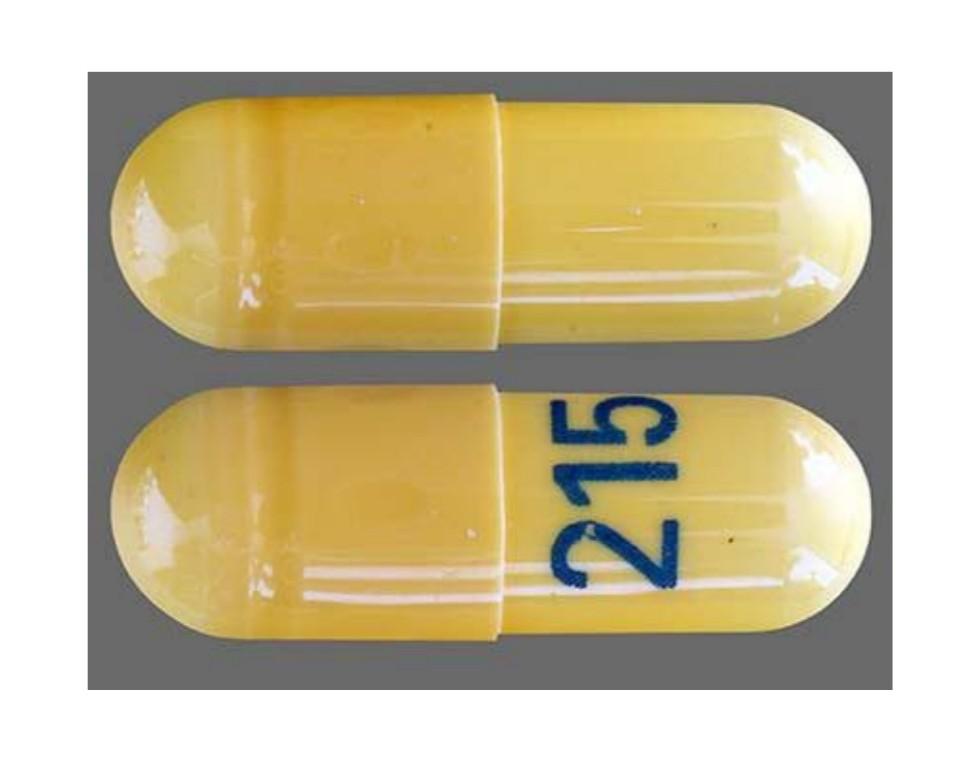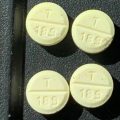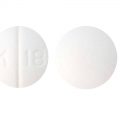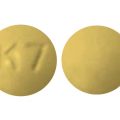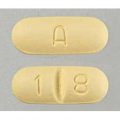The yellow, capsule-shaped pill with the imprint 215 has been identified as Gabapentin 300 mg. It is supplied by Ascend Laboratories, LLC. Gabapentin is an anticonvulsant medication that helps control seizures in people with epilepsy. Some forms of gabapentin can also treat restless legs syndrome (RLS) and certain types of nerve pain.
Gabapentin appears to work by altering electrical activity in the brain and influencing the activity of chemicals called neurotransmitters, which send messages between nerve cells.
What is yellow capsule 215 Used for?
Yellow capsule 215 is used to treat the following conditions:
- Seizures: Gabapentin is used to treat partial (focal) seizures. It’s taken together with other seizure medications in adults and in children 3 years of age and older who have epilepsy.
- Postherpetic neuralgia: This is pain from nerve damage caused by shingles, a painful rash that affects adults. Shingles appears after infection with the varicella zoster virus. This virus occurs in people who have had chicken pox.
Gabapentin may be used as part of a combination therapy. This means you may need to take it with other drugs.
How does yellow capsule 215 work?
Gabapentin belongs to a class of drugs called anticonvulsants. A class of drugs is a group of medications that work in a similar way. These drugs are often used to treat similar conditions.
It’s not fully understood how gabapentin works. For postherpetic neuralgia, it seems to prevent the increase in sensitivity to pain that occurs. For seizures, it may alter the effect of calcium (low levels of calcium may cause seizures).
Gabapentin oral capsule causes dizziness and drowsiness. Avoid driving or using heavy machinery while taking this drug until you know how it affects you.
Is yellow capsule 215 a narcotic or controlled substance?
Gabapentin is not a narcotic. It’s not classified as a controlled substance in most states. (Kentucky, West Virginia, Michigan, Tennessee, and Virginia have reclassified gabapentin as a Schedule V controlled substance). Gabapentin is not an opioid.
Is Yellow capsule 215 addictive?
Gabapentin is not addictive, but this doesn’t mean that gabapentin can’t be abused. A small number of studies have reported misuse and abuse of gabapentin.
How should I take Yellow capsule 215?
Take gabapentin exactly as prescribed by your doctor. Follow all directions on your prescription label. Do not take in larger or smaller amounts or for longer than recommended. If your doctor changes your brand, strength, or type of gabapentin, your dosage needs may change. Ask your pharmacist if you have any questions about the new kind of gabapentin you receive at the pharmacy.
Swallow the capsule whole and do not crush, chew, break, or open it. Do not stop taking this medicine suddenly, even if you feel fine. Stopping suddenly may cause increased seizures. Follow your doctor’s instructions about tapering your dose.
Does yellow capsule 215 cause withdrawal symptoms?
Gabapentin withdrawal symptoms have been reported since the drug was approved. However, the individuals in these reports experienced symptoms after discontinuing higher-than-recommended doses of gabapentin and for uses for which the drug was not approved.
What’s known about yellow capsule 215 and overdose?
Overdoses on gabapentin have been reported. Individuals experienced double vision, slurred speech, drowsiness, diarrhea and sluggishness.
What should I do if I miss a dose of Yellow Pill 215?
If you forget to take a dose of gabapentin, take it as soon as you remember. If it’s just a few hours before it’s time to take your next dose, take only one dose. Never take more than one dose in an attempt to catch up. If you have any concerns or questions, be sure to call your healthcare provider or pharmacist right away.
What are the side effects of yellow capsule 215?
Yellow capsule 215 can cause mild or serious side effects. The following list contains some of the key side effects that may occur while taking gabapentin. This list does not include all possible side effects.
For more information on the possible side effects of gabapentin, or tips on how to deal with a troubling side effect, talk with your doctor or pharmacist.
More common side effects
Some of the more common side effects that can occur with use of gabapentin are listed below, along with their rates:
Also:
- viral infection
- fever
- nausea and vomiting
- trouble speaking
- hostility
- jerky movements
The side effect rates are based on patients over 12 years old, as reported in clinical trials for the brand equivalent, Neurontin. Certain rates vary by age. For example, pediatric patients 3 to 12 years of age most commonly experienced viral infection (11%), fever (10%), nausea and/or vomiting (8%), tiredness (8%), and hostility (8%). There were no clinically significant differences in rates between men and women.
If these effects are mild, they may go away within a few days or a couple of weeks. If they’re more severe or don’t go away, talk to your doctor or pharmacist.
Serious side effects
Call your doctor right away if you have serious side effects. Call 911 if your symptoms feel life-threatening or if you think you’re having a medical emergency. Serious side effects and their symptoms can include the following:
- Changes in mood or anxiety. Symptoms can include:
o thoughts of suicide or dying
o attempts to commit suicide
o anxiety that’s new or gets worse
o crankiness that’s new or gets worse
o restlessness
o panic attacks
o trouble sleeping
o anger
o aggressive or violent behavior
o extreme increase in activity and talking
o unusual changes in behavior or mood
- Changes in behavior and thinking, especially in children ages 3 to 12 years. Symptoms can include:
o emotional changes
o aggressiveness
o trouble concentrating
o restlessness
o changes in school performance
o hyper behavior
- Serious and life-threatening allergic reaction. Symptoms can include:
o skin rashes
o hives
o fever
o swollen glands that do not go away
o swollen lips and tongue
o yellowing of your skin or the whites of your eyes
o unusual bruising or bleeding
o severe tiredness or weakness
o unexpected muscle pain
o frequent infections.


